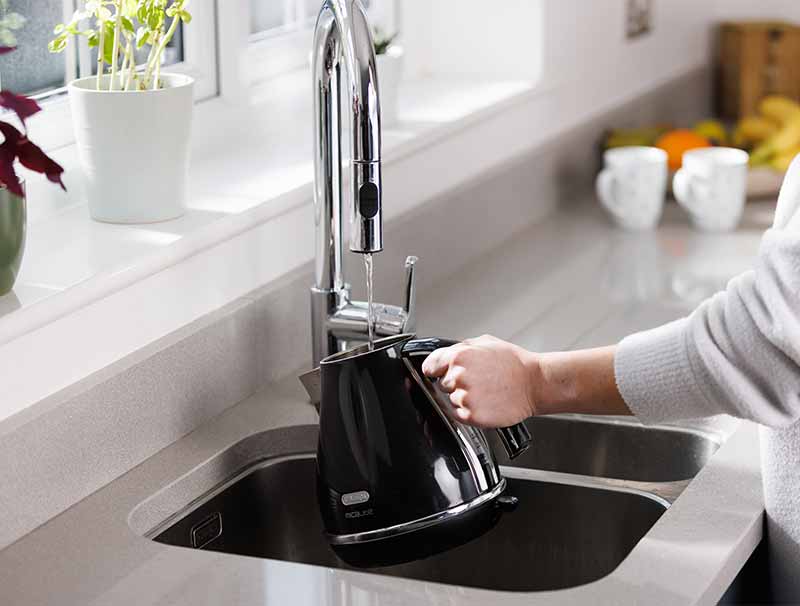Proven Methods for Resolving Low Water Pressure in Your Home
Proven Methods for Resolving Low Water Pressure in Your Home
Blog Article
This article down below pertaining to 4 Ways to Troubleshoot Low Water Pressure is pretty much attention-grabbing. Check it out yourself and see what you think of it.

Low water stress in your home can be a frustrating problem, impacting everything from bathing to washing meals. If you're experiencing weak water flow, there are numerous possible causes and remedies to discover. In this overview, we'll review typical factors for low tide stress and functional actions to deal with the issue properly.
Intro to Low Tide Pressure
Low water pressure takes place when the circulation of water from your faucets, showers, and other fixtures is weaker than usual. This can make day-to-day jobs extra difficult and less effective. Recognizing the root causes of low tide stress is vital to finding the appropriate service.
Usual Causes of Low Tide Pressure
Faulty Pressure Regulators
Pressure regulatory authorities are responsible for keeping regular water stress in your house. If they malfunction, it can lead to low tide stress or unequal flow throughout your home.
Metropolitan Water System Issues
Occasionally, the problem exists outside your home. Community water supply concerns, such as main line leakages or upkeep job, can briefly decrease water stress in your location.
Pipe Obstructions
In time, pipelines can come to be clogged with mineral deposits, sediment, or particles, limiting the flow of water. This is a common problem in older homes with galvanized steel pipelines.
Deterioration
Rust within pipes can result in leakages and decreased water stress. Rust accumulation can constrict water flow, specifically in aging plumbing systems.
Just How to Diagnose Low Water Pressure
Inspecting Pipelines
Evaluate visible pipelines for indications of leaks, rust, or obstructions. Take note of any kind of uncommon noises, such as banging or rattling pipes, which might show problems within the plumbing system.
Consulting with a Plumber
If you're not able to identify the reason for low tide pressure, think about working with a specialist plumber to carry out a detailed inspection. They can identify underlying problems and suggest proper remedies.
Checking Faucets and Fixtures
Start by evaluating the water pressure at different taps and fixtures throughout your home. If the problem is separated to specific areas, it may suggest local troubles.
DIY Solutions to Take Care Of Low Tide Stress
Flushing Water Heater
Sediment accumulation in the water heater can limit circulation and minimize efficiency. Flushing the tank periodically assists get rid of debris and keep optimal efficiency.
Inspecting Stress Regulatory Authority
Guarantee that the stress regulatory authority is functioning properly. Readjusting or replacing the regulatory authority can aid restore proper water pressure throughout your home.
Cleaning Up Aerators and Showerheads
Mineral deposits can accumulate in aerators and showerheads, minimizing water circulation. Get rid of and cleanse these elements frequently to improve water stress.
Clearing Up Clogs in Piping
For minor clogs, try using a plumbing serpent or chemical drain cleaner to clear blockages in pipes. Beware when making use of chemicals and adhere to security guidelines.
When to Call a Professional Plumber
If do it yourself efforts stop working to resolve the issue or if you presume considerable plumbing issues, it's best to look for aid from a licensed plumber. They have the competence and devices to attend to intricate concerns safely and successfully.
Preventive Measures to Preserve Water Pressure
Mounting a Pressure Booster
Consider setting up a pressure booster pump to improve water pressure in locations with continually reduced flow. This can be especially useful for multi-story homes or homes with high-demand fixtures.
Surveillance Water Use
Be mindful of water use habits and prevent overtaxing the plumbing system. Straightforward changes, such as staggering showers and washing tons, can assist maintain adequate water pressure.
Regular Maintenance
Arrange routine upkeep for your plumbing system to avoid concerns such as rust, leakages, and obstructions. Addressing minor troubles early can help prevent even more substantial repairs in the future.
Verdict
Handling low water pressure can be frustrating, yet recognizing the underlying reasons and executing proper solutions can restore optimum flow throughout your home. Whether it's cleaning aerators, evaluating pipes, or speaking with a plumber, taking proactive steps can ensure a constant supply of water for your daily requirements.
FOUR WAYS TO FIX LOW WATER PRESSURE NOW
Turning on a shower or faucet only to find the water comes out in a sad, slow drizzle is never a good feeling. How exactly are you supposed to wash a pan or take a quick shower when it takes 10 minutes just to rinse off a little soap? The good news is that when your water pressure is bad, there's always a cause: typically one that can be easily fixed. Here are some of the most common causes of low pressure and what you can do to fix the issue:
DEBRIS AND MINERAL DEPOSIT BUILDUPS
If you notice low water pressure from just one or two of the fixtures in your house, the problem likely has to do with debris buildup. Water is full of minerals and other debris, all of which can accumulate in your pipes and on your fixtures. This can cause a blockage that affects how much water flows through. To fix this, try filling a small plastic bag with white vinegar, and use a rubber band to hang it around your showerhead or faucet. Let the head of the fixture soak for a few hours, and the vinegar should loosen the deposits.
WATER LEAKS
Leaks are another common cause of low water pressure. If water is flowing out of your plumbing through a hole or crack before it can reach your fixture, the pressure coming out of the faucet or showerhead will be lower. A plumbing professional is your best bet for finding and repairing a leak in your water supply pipes.
Leaks are another common cause of low water pressure. If water is flowing out of your plumbing through a hole or crack before it can reach your fixture, the pressure coming out of the faucet or showerhead will be lower. A plumbing professional is your best bet for finding and repairing a leak in your water supply pipes.
A VALVE ISSUE
If you have low water pressure throughout your home, check your main shut-off valve to make sure it's completely open. You may also want to see if there's a pressure-reducing valve installed. If there is, have a plumber help you adjust the settings to get the pressure you're looking for.
OTHERS USING WATER
Believe it or not, your low water pressure could be caused by your neighbors. If you notice low pressure at certain times of day, it may be because you and the people living next to you have similar schedules - when everyone is showering at the same time, the pressure will be lower in every home. Low pressure throughout the neighborhood may also be caused by an issue with your municipal water supply. If that's the case, call the supplier to see if they're working on the issue.
https://www.rotorooter.com/blog/water-leaking/low-water-pressure-fixes/

I recently found that write up about Low Water Pressure in the House? when perusing the search engines. Sharing is good. Helping others is fun. I praise you for being here. Come back soon.
This Site Report this page